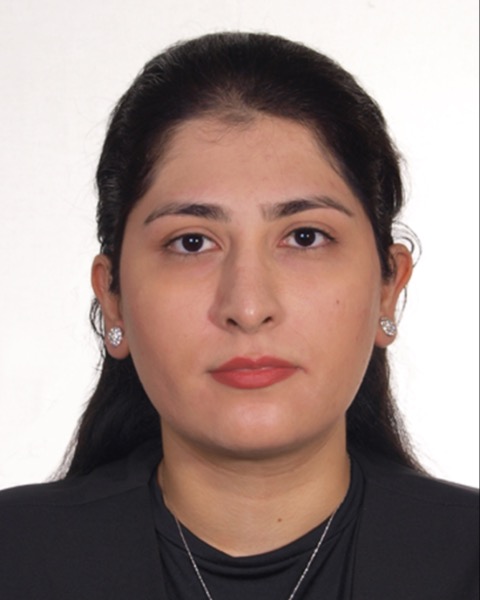Back
Sarcoma Biology & ‘omics
(P 240) GLYCOSYLATION SITES IN MOLECULAR DRIVERS OF SARCOMA

Pegah Rahimizadeh, MSc (she/her/hers)
PhD student
McGill University
Montreal, Quebec, Canada
Joanna Przybyl, PhD (she/her/hers)
Assistant Professor
McGill University
Montreal, Quebec, Canada
Author(s)
Co-Author(s)
Objective: Altered glycosylation of oncogenes, transcription factors, and kinases in cancer can enhance the stability and activation of these proteins, which may contribute to increased tumor cell proliferation, survival, and resistance to therapy. Protein glycosylation is regulated by the hexosamine biosynthesis pathway (HBP), one of the glucose metabolism pathways. Several studies reported that pharmacological inhibition of HBP and glycosylation have anti-tumorigenic effects and modulate drug sensitivity both in vitro and in vivo. However, most of these reports studied carcinomas, and only limited studies have been performed on the role of aberrant glycosylation in sarcoma. We recently reported a remarkable enrichment of genes involved in HBP in a subset of leiomyosarcoma (LMS) and demonstrated that expression of GFPT2, the rate-limiting enzyme of HBP, is associated with poor clinical outcomes in LMS [PMID: 33941787]. We also identified the c-Myc oncoprotein as a potential target of HPB that may be stabilized by aberrant glycosylation in a subset of LMS. The activation of HBP and glycosylation status of molecular drivers in other types of sarcoma has not been extensively studied, and a better understanding of the glycosylation status of molecular drivers in sarcoma may translate to important clinical implications. Here we present a meta-analysis of known glycosylation sites in driver molecules implicated in sarcoma.
Methods: We assembled a list of 124 established molecular drivers in 54 histological types of bone and soft tissue sarcoma [as described in PMIDs: 26684580 and 27523972]. Of those, 98 drivers are involved in chromosomal rearrangements, 17 are recurrently mutated, 4 are affected by gene amplification, and 5 are frequently deleted in sarcoma. We analyzed known glycosylation sites of these molecular drivers using curated databases that catalogue protein post-translational modifications. We analyzed the data available in the following databases: PhosphoSitePlus (v6.6.0.4), iPTMnet (v6.1), GlyGen (v1.12.3), O-GlcNAc Database (v1.2), O-GlcNAcAtlas (v2.0), and GlycoDomainViewer (v 2.0). We used Molecular Signatures Database (MSigDB v7.5.1) to assign gene families of the driver molecules.
Results: We identified glycosylation sites in 69 of 124 drivers implicated in 47 of 54 histological types of sarcoma. These drivers include multiple oncogenes, transcription factors, protein kinases, tumor suppressors, growth factors, and chromatin regulators. Fifty-two of these 69 driver molecules are involved in chromosomal rearrangements in sarcoma. We identified sites of N-glycosylation, O-glycosylation, and O-GlcNAcylation in 18 (26%), 19 (28%), and 53 (77%) driver proteins, respectively. The drivers with all three types of glycosylation sites include NOTCH2, KDR, and COL6A3. RANBP2, a protein that is involved in fusions in inflammatory myofibroblastic tumor (IMT), has the highest number of predicted O-GlcNAcylation sites among all analyzed molecules (75 sites). FN1 is involved in fusion proteins in IMT and phosphaturic mesenchymal tumor, and has the highest number of N- and O-glycosylation sites (12 and 35 sites, respectively). Overall, IMT is a sarcoma type with the highest number of drivers with known glycosylation sites (10 different drivers involved in chromosomal rearrangements). Among the three analyzed types of glycosylation, O-GlcNAcylation is the most frequent one in the analyzed driver molecules.
Conclusion: Modulation of glycosylation and glucose metabolism through HBP, either alone or in combination with other treatment modalities, is a promising direction of research that may have potential clinical implications. Our meta-analysis provides a comprehensive overview of molecular drivers in sarcoma that may be modulated by altered glycosylation. These preliminary data warrant further functional exploration of the role of HBP and glycosylation in selected types of sarcoma, with IMT being a tumor type with the highest rate of molecular drivers that can be post-translationally modified by glycosylation.
Methods: We assembled a list of 124 established molecular drivers in 54 histological types of bone and soft tissue sarcoma [as described in PMIDs: 26684580 and 27523972]. Of those, 98 drivers are involved in chromosomal rearrangements, 17 are recurrently mutated, 4 are affected by gene amplification, and 5 are frequently deleted in sarcoma. We analyzed known glycosylation sites of these molecular drivers using curated databases that catalogue protein post-translational modifications. We analyzed the data available in the following databases: PhosphoSitePlus (v6.6.0.4), iPTMnet (v6.1), GlyGen (v1.12.3), O-GlcNAc Database (v1.2), O-GlcNAcAtlas (v2.0), and GlycoDomainViewer (v 2.0). We used Molecular Signatures Database (MSigDB v7.5.1) to assign gene families of the driver molecules.
Results: We identified glycosylation sites in 69 of 124 drivers implicated in 47 of 54 histological types of sarcoma. These drivers include multiple oncogenes, transcription factors, protein kinases, tumor suppressors, growth factors, and chromatin regulators. Fifty-two of these 69 driver molecules are involved in chromosomal rearrangements in sarcoma. We identified sites of N-glycosylation, O-glycosylation, and O-GlcNAcylation in 18 (26%), 19 (28%), and 53 (77%) driver proteins, respectively. The drivers with all three types of glycosylation sites include NOTCH2, KDR, and COL6A3. RANBP2, a protein that is involved in fusions in inflammatory myofibroblastic tumor (IMT), has the highest number of predicted O-GlcNAcylation sites among all analyzed molecules (75 sites). FN1 is involved in fusion proteins in IMT and phosphaturic mesenchymal tumor, and has the highest number of N- and O-glycosylation sites (12 and 35 sites, respectively). Overall, IMT is a sarcoma type with the highest number of drivers with known glycosylation sites (10 different drivers involved in chromosomal rearrangements). Among the three analyzed types of glycosylation, O-GlcNAcylation is the most frequent one in the analyzed driver molecules.
Conclusion: Modulation of glycosylation and glucose metabolism through HBP, either alone or in combination with other treatment modalities, is a promising direction of research that may have potential clinical implications. Our meta-analysis provides a comprehensive overview of molecular drivers in sarcoma that may be modulated by altered glycosylation. These preliminary data warrant further functional exploration of the role of HBP and glycosylation in selected types of sarcoma, with IMT being a tumor type with the highest rate of molecular drivers that can be post-translationally modified by glycosylation.
